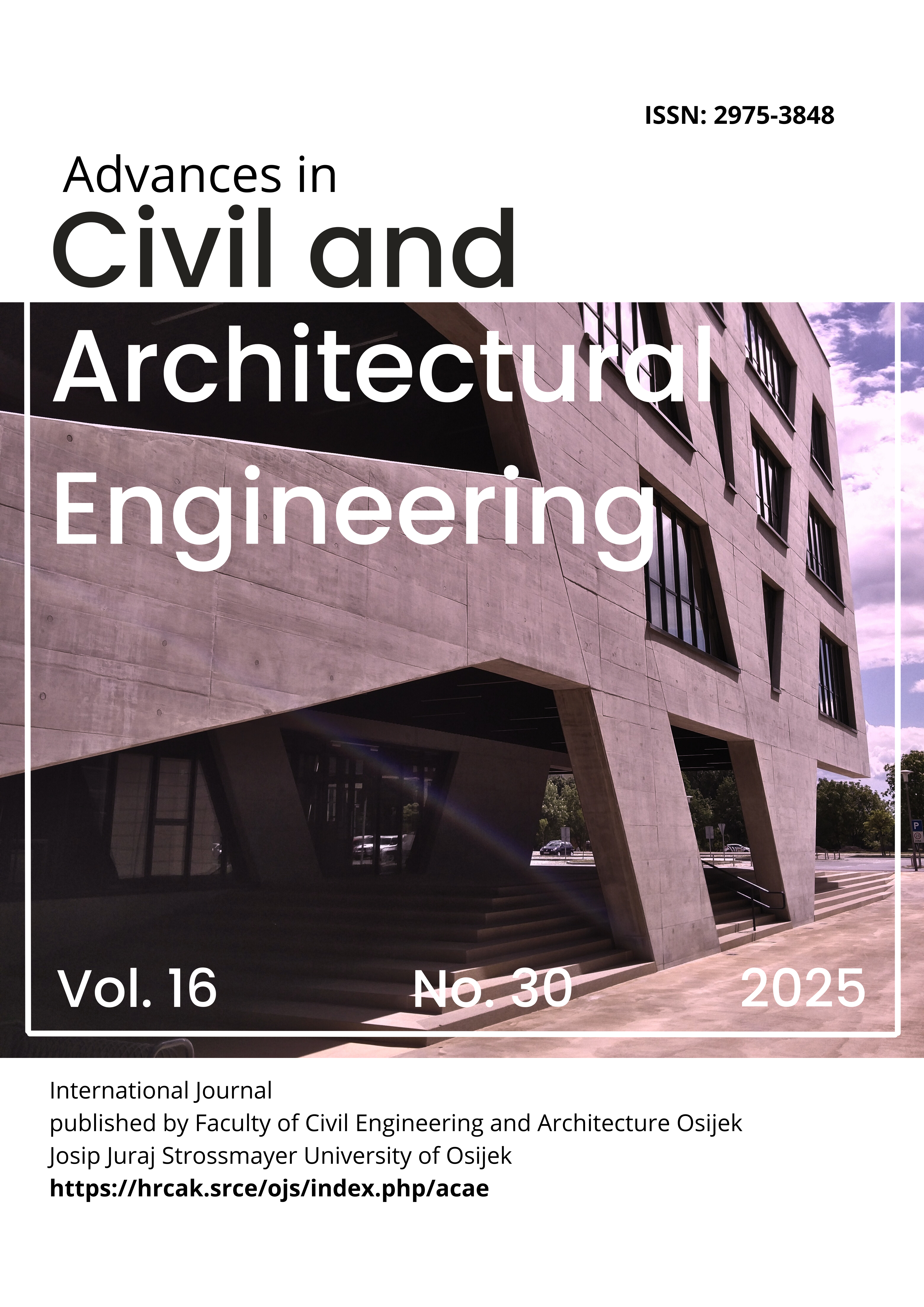Physical and mechanical characteristics of geopolymer concrete incorporating PET wastes as partial replacement of fine aggregate
DOI:
https://doi.org/10.13167/2025.30.14Keywords:
geopolymer concrete, PET wastes, Ground Granulated Blast Furnace Slag (GGBFS), sand replacementAbstract
This research aims to address the environmental and sustainability issues associated with traditional concrete using geopolymer concrete and PET waste as alternatives. The methodology involves performing physical tests on density and absorption, and mechanical tests on the modulus of elasticity, compression, splitting, flexure, energy absorption, and axial strain. Fine aggregates (sand) are partially replaced with 5; 10; 15; 20; and 30 % by equivalent weight percentages of PET waste particles while keeping all other proportions constant. Additionally, the ultrasonic pulse velocity is determined. Specimens were evaluated at 7 and 28 d to assess the impact of PET incorporation. Results indicate that adding PET particles alters the properties of the resulting concrete. The physical properties (density and ultrasound velocity) decrease as the PET ratios increase, and the absorption rate increases. In terms of strength, results show that the specimens containing partial substitution ratios ranging within 5-15 % present 3,49-9,09 %; 2,20-10,09 %; and 8,45-10,26 % increments in tensile, compressive, and flexural strengths, respectively, compared with the reference specimens. The results also indicate a rise in the energy absorption and axial strain of the specimens with replacement percentages ranging from 5-30 %, and the modulus of elasticity decreases as the PET content increases. The strength parameters decrease when the PET content exceeds 15 %. In conclusion, replacing 10 % of sand with PET particles in geopolymer concrete enhances strength-related properties. Specifically, the tensile, compressive, and flexural strengths of the specimens are enhanced by 20,27; 12,70; and 14,28 %, respectively, compared to the reference specimen.
Downloads
Published
Issue
Section
License
Copyright (c) 2025 Abbas O. Dawood, Noor M. Shakir

This work is licensed under a Creative Commons Attribution 4.0 International License.

